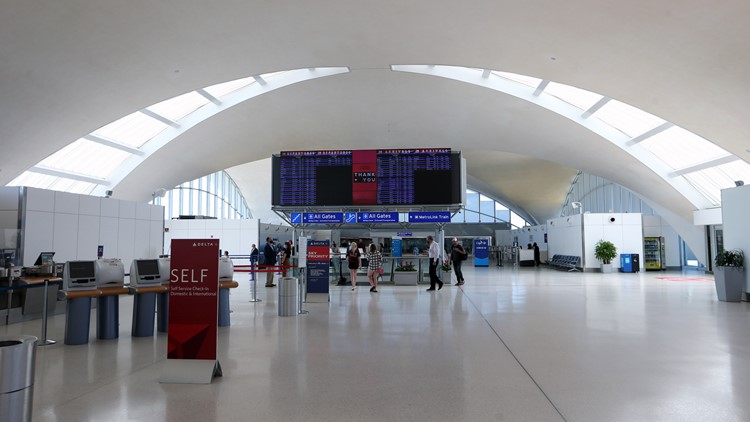ST. LOUIS — It has closed parking lots, halted millions in capital spending and left dozens of staff positions unfilled.
But even as St. Louis Lambert International Airport makes severe budget cuts amid a drastic reduction in travel due to the pandemic, officials at the facility see some optimistic signs for the future. And it counts itself relatively lucky during these past five months, at least compared with its peers.
“The overall story is that (Lambert) has remained strong and the outlook is strong,” said the airport’s director, Rhonda Hamm-Niebruegge.
Nationally, Covid-19 is expected to drive total losses at domestic airports to about $23.3 billion from March 2020, when the virus shuttered the economy, through the end of 2021, according to Airports Council International. And, according to a recent Fitch Ratings report, airports that rely heavily on a single carrier, such as Chicago Midway International Airport and Charlotte Douglas International Airport, could have an even harder time returning to pre-pandemic levels.
But according to Hamm-Niebruegge, it’s St. Louis’ reliance on Southwest Airlines, which accounts for 60% of the airport’s total passenger traffic, that’s helping Lambert to fare better than many of its peers.
Lambert operated 172 flights per day in August, off from about 250 last year, according to data provided by the airport. But it still managed to retain 71% of its flights, faring better than 19 other medium hub airports. Only Nashville and William P. Hobby Airport in Houston kept a higher percentage of their 2019 flights.
Even as airlines make more drastic cuts in September, Lambert will still rank No. 2 among the medium hubs for total daily flights, with 128.
Much of that can be attributed to Southwest. The Dallas-based carrier has pushed additional connecting traffic through St. Louis, and faces limited exposure to international markets, which have been hit hardest during the pandemic. Domestic leisure travel has come back faster, thanks to U.S. State Department restrictions on travel abroad.
“We have fared, thanks to Southwest, better than most markets,” Hamm-Niebruegge said.
TRAFFIC AND TURBULENCE
Still, Lambert's drop in traffic — and the revenue that comes with it — has been significant. The airport said enplanements, or the number of passengers boarding a plane at Lambert, have dropped more than 57% from January through July. Air traffic began taking a significant hit in April.
And Lambert started with far fewer passengers than some peers; in 2019, for example, it ranked 34th among U.S. airports for enplanements, with 7.8 million, a number that has been rising for years after a huge drop-off sparked by American Airlines' dehubbing, which began in 2003. St. Louis is the 21st largest metropolitan area in the U.S.
Lambert's response to the recent traffic woes, like airports nationally, has been to cut expenses.
At the end of March, it canceled five infrastructure projects worth more than $3 million, including upgrades to a bus port, repaving of parking lots, a new roof for the Missouri Air National Guard's base and a new vehicle wash bay.
Lambert is also working to fill only 40 of the 107 vacancies it has on its staff. The airport, which is owned by the city of St. Louis, directly employs 336 people.
It pulled 7% from its operating budget, or about $13 million, Hamm-Niebruegge said. That includes cuts to the hours for information booths, consulting contracts, and vehicle and equipment purchases.
And three of five parking lots have been closed, preventing operating losses. The city projects Lambert will take in $173.8 million in fiscal 2021, which ends next summer, about flat from fiscal 2020 and off 10% from fiscal 2019.
Other airports have also closed lots, such as Denver International Airport, Boston’s Logan International Airport and Albany International Airport in New York. Denver, for example, has slashed $50 million from its operating and maintenance costs.
SEPTEMBER RECKONING
Airports hope two things will prevent even more drastic cost cutting: a steady, sizable increase in flight activity this year and into the next, and billions more in federal aid.
September will be pivotal, and not only because returns to schools could lead to another spike in Covid-19 cases. Business travel often rises in September. Should that uptick fail to materialize and fewer families go on vacation with kids back in school, it will be harder for airports to regain traffic.
“Probably at the end of September, we’ll know how the rest of the year is going to go,” said John Selden, general manager of Hartsfield-Jackson Atlanta International Airport.
Click here for the full story.



